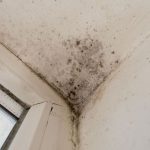Experts have revealed when a toxic cloud of sulphur dioxide that reached the UK over the weekend will spread south through the country, as experts warn of potential health impacts.
It’s thought the cloud, which was triggered by volcanic eruptions near Grindavik, Iceland on Thursday, cloud pass all over Britain after hitting a small part of the Scottish Highlands in the early hours of Monday morning.
Sulphur dioxide (SO2) is a toxic gas usually produced when coal or crude oil is burnt, but huge quantities can also be released during volcanic eruptions.
The Met Office has been monitoring the cloud’s movement and predict that it will move south, striking in the Midlands before ariving in the South at around 6am tomorrow morning.
The gas, which is colourless but strong-smelling, is expected to finally move on by 7pm on Wednesday.
Elderly people and young children are particularly vulnerable to SO2 inhalation and have been told to reduce exposure by remaining inside if possible in affected areas.
Inhaling it can cause symptoms including a sore throat, coughing, burning eyes, a runny nose, as well as tight lungs and difficulty breathing.
People with asthma are also particularly sensitive and could have an attack triggered even by very low exposure.
Prior to the plume’s arrival on British shores, Prof Simon Carn, of Michigan Technological University, warned on X, formerly Twitter: “Another batch of volcanic SO2 en route to the UK and Ireland.
“It is courtesy of the latest eruption on Iceland’s Reykjanes peninsula. Might cause some local air quality impacts in the coming days,” he added.
Meteorologists have said there will be “small concentrations”, meaning air pollution at ground level in the UK should remain relatively low.
The latest eruption began after a series of strong quakes and within an hour a 2.4-mile fissure had cut through the Sundhnúkur crater.
Lava continued to spew from the volcano in southwestern Iceland on Friday (August 23).
A Met Office spokesperson told The Mirror: “A sulphur dioxide plume which originated from the volcano in Iceland has been crossing the UK high up in the atmosphere and will soon clear to the south-east.
“Impacts have been low from this sulphur dioxide, as it is high in the atmosphere and is having little influence on ground-level air quality.
“Small concentrations at surface level mean that the air pollution levels remain low. Air pollution is currently low and expected to remain that way for the whole of the UK today.
“We’re continuing to monitor any sulphur dioxide release originating from Iceland, with current forecasts suggesting little influence on UK surface air pollution in the coming days.”
Iceland experiences frequent and strong seismic activity because it sits on two shifting tectonic plates, which causes magma to rise and burst out.







